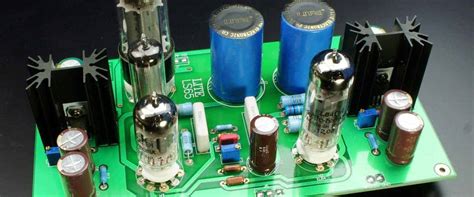The Essential Guide to Printed Circuit Board Fabrication
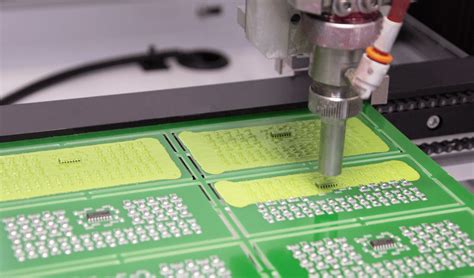
Key Takeaways
In understanding pcb manufacturing, it’s essential to grasp the fundamental aspects that contribute to the overall success of your projects. The processes involved in pcb manufacturing are not just about creating circuit boards; they encompass a range of techniques that ensure reliability and performance in electronic devices. Engaging with reputable pcb manufacturing companies can significantly enhance your results, as these organizations often employ specialized technologies and skilled professionals who focus on quality assurance.
When considering the pcb manufacturing cost, remember that it can vary based on materials, technology, and the complexity of designs. By investing in high-quality materials and advanced techniques, you can ensure that your final product meets industry standards and performs optimally.
It’s beneficial to stay informed about trends affecting the pcb manufacturing business, as innovations continually shape the landscape of electronics production. “Keep an eye on emerging technologies; they could present you with cost-saving opportunities or improve efficiency.”
Ultimately, a thorough understanding of these elements will empower you to navigate the complexities of PCB production effectively, ensuring your designs are both functional and competitive in today’s market landscape. For more insights into PCB fabrication processes, visit Andwin.
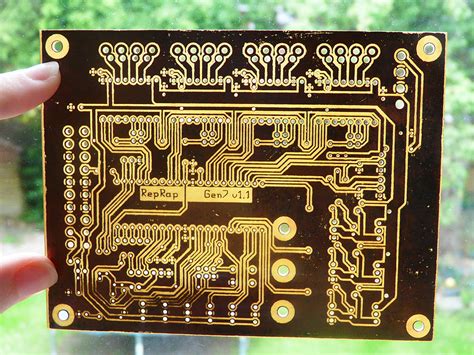
Introduction to Printed Circuit Board Fabrication
The world of printed circuit board (PCB) fabrication is complex yet fascinating, playing a crucial role in the functionality of modern electronic devices. As you delve into this essential domain, it is important to understand the foundational aspects of PCB manufacturing. This process begins with the careful selection of top-quality materials that not only determine the performance but also influence the overall PCB manufacturing cost. Engaging with reputable PCB manufacturing companies becomes vital as they have the expertise and technology required to deliver high-quality products. Each step in the PCB manufacturing business, from initial design to final assembly, relies on a series of intricate processes that ensure reliability and efficiency in electronic applications. By exploring these components, you can appreciate how various factors intertwine to elevate standards in PCB production, making it an indispensable part of contemporary technology. Whether you are a hobbyist or an industry professional, understanding these elements will greatly enhance your grasp of how PCBs come to life and function seamlessly within different devices.
Key Materials Used in PCB Production
When delving into the world of PCB manufacturing, it’s crucial to understand the key materials that serve as the backbone of printed circuit boards. The primary substrate material used in PCB manufacturing companies is FR-4, a composite of woven fiberglass and epoxy resin that provides excellent mechanical strength and electrical insulation. Additionally, you may encounter other materials like polyimide and aluminum, each chosen based on specific thermal and electrical performance criteria.
Copper is another vital component, typically used for the conductive layers that form the necessary circuits on your PCB. The quality of copper greatly influences overall performance, which is why PCB manufacturing cost can vary significantly across different manufacturers. Moreover, a vital aspect to consider is the choice of solder masks and silkscreen inks that not only protect the copper but also facilitate effective soldering of components.
In your pursuit to establish a successful PCB manufacturing business, understanding these materials will help you make informed decisions that impact quality and functionality. As technology advances, innovative materials continue to emerge, further enhancing the capabilities of PCBs in modern electronic devices. By familiarizing yourself with these key components, you can better appreciate the complexities involved in PCB production and position your business advantageously within a competitive market landscape.

Essential Processes in PCB Manufacturing
In the pcb manufacturing industry, understanding the essential processes is key to producing high-quality products that meet market demands. The journey begins with design and layout, where engineers create detailed schematics that outline how the electronic components will interact and connect. Once the design is complete, it moves into the fabrication phase, where layers of copper are printed onto a substrate material. This stage is crucial, as it determines not only the performance but also the durability of the circuit board.
Following fabrication, processes such as etching and Drilling are conducted to remove excess copper and create pathways for electrical signals. At this juncture, you should be aware of various pcb manufacturing companies that offer specialized services to ensure precision. The quality of materials used plays an essential role in maintaining low pcb manufacturing costs, making it imperative to select reliable suppliers for components like FR-4 laminates.
After these steps, a process known as solder mask application is undertaken, which protects the copper traces from oxidation and prevents solder shorting. As you navigate through these stages, keep in mind that each step must adhere to strict regulations and industry standards to foster a competitive pcb manufacturing business. Ultimately, familiarity with these essential processes not only enhances your understanding but also empowers you to make informed decisions in selecting or collaborating with professionals within this intricate field.
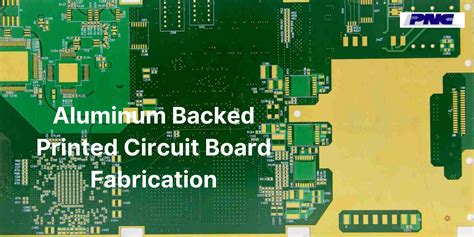
Technologies Revolutionizing PCB Fabrication
As you navigate the world of PCB manufacturing, it’s essential to stay informed about the emerging technologies that are transforming the landscape. Advanced PCB manufacturing companies are now leveraging cutting-edge techniques such as automation, artificial intelligence, and 3D printing to enhance precision and efficiency. These innovations not only reduce production time but also contribute to a significant decrease in the overall PCB manufacturing cost.
One notable development is the implementation of automated optical inspection (AOI) systems, which utilize high-resolution cameras and machine learning algorithms to detect defects during the fabrication process. This technology ensures that only flawless boards are shipped, thus increasing reliability for end users and enhancing your customer’s trust in your PCB manufacturing business.
The rise of flexible printed circuits is another exciting advancement. These circuits can bend and adapt to various shapes, making them ideal for compact electronic devices like wearables and smartphones. Using materials such as polyimide or polyester allows for a lighter product without compromising functionality.
A summary of some key technologies revolutionizing PCB fabrication is presented below:
| Technology | Description | Benefits |
|---|---|---|
| Automated Optical Inspection | Utilizes cameras and AI for defect detection | Improves quality control |
| 3D Printing | Creates complex designs layer by layer | Reduces prototyping time |
| Flexible PCBs | Bendable circuits that fit into compact spaces | Enhances design flexibility |
These advancements not only streamline your operations but also pave the way for innovative applications in various industries, from automotive to consumer electronics. Understanding these trends can give you a competitive edge in the ever-evolving realm of PCB manufacturing.
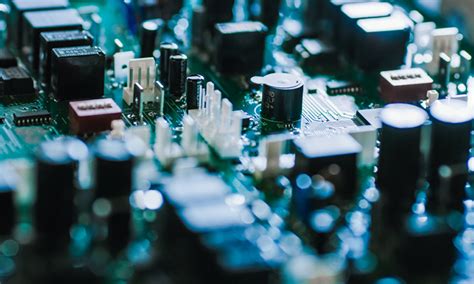
Quality Assurance in PCB Production
In the realm of pcb manufacturing, ensuring quality is paramount to the overall success of your pcb manufacturing business. Quality assurance begins at the very inception of the design phase, where stringent standards must be adhered to throughout all stages of production. You must be familiar with various testing methods that validate the integrity of your printed circuit boards. These methods often include visual inspections, electrical testing, and mechanical reliability assessments.
Furthermore, collaborating with reputable pcb manufacturing companies is essential, as they typically implement rigorous quality assurance processes to mitigate potential issues before they escalate into significant problems. The pcb manufacturing cost can vary based on the complexity and required specifications; hence, investing in quality assurance can ultimately save you money by reducing waste and rework. By emphasizing quality at each step, you not only improve the durability and performance of your products but also foster trust among your customers and stakeholders. Remember that a well-executed quality assurance strategy not only elevates your product standards but also enhances your brand’s reputation in a competitive market.

Challenges and Solutions in PCB Fabrication
In the realm of PCB manufacturing, you may encounter numerous challenges that can impact the overall quality and efficiency of the production process. One significant issue is the pcb manufacturing cost, which can escalate quickly due to factors such as material selection, labor, and technology. It is crucial to balance cost with quality to ensure that your products remain competitive in the market. Moreover, as you navigate through various pcb manufacturing companies, you may find discrepancies in their approach to resolving common issues such as signal integrity, thermal management, and component placement precision.
Another challenge you might face is the complexity of designs required for modern electronic devices. With advancements in technology, there is an increasing demand for high-density interconnection (HDI) boards and multilayer configurations. This complexity necessitates a robust understanding of the intricacies involved in pcb manufacturing processes. Collaborating with experienced professionals in the pcb manufacturing business can yield valuable insights into efficient design optimization and production strategies.
Additionally, maintaining strict quality assurance standards is vital for minimizing defects during fabrication. You have to implement effective quality control measures throughout each stage of production to mitigate any risks associated with faulty products reaching the market. Using advanced inspection techniques like automated optical inspection (AOI) and X-ray imaging can enhance your ability to identify issues early in the process.
Overall, embracing a proactive approach towards addressing these challenges will not only streamline your operations but will also position you for success in an ever-evolving market landscape.
Future Trends in Printed Circuit Board Technologies
As the demand for more advanced electronics continues to rise, future trends in printed circuit board (PCB) technologies are set to transform the landscape of PCB manufacturing. One key area of innovation involves the integration of flexible PCBs, which allow for more versatility in design, enabling the production of thinner and lighter devices. Moreover, advancements in 3D printing are paving the way for additive manufacturing, which can significantly reduce PCB manufacturing costs and lead times, offering a competitive edge to PCB manufacturing companies. Another trend is the increased focus on sustainable practices; as you explore options within your PCB manufacturing business, consider how eco-friendly materials and processes can not only meet regulatory demands but also appeal to a growing segment of environmentally conscious consumers. Additionally, the push towards automated assembly techniques enhances accuracy and efficiency, directly influencing the overall production quality and reducing labor costs. As these trends evolve, it’s vital for you to stay informed about how they could impact your operations and supply chain strategies for PCB manufacturing in an ever-competitive market.
Conclusion
In summary, navigating the world of pcb manufacturing requires a deep understanding of various elements that contribute to the creation of high-quality printed circuit boards. From selecting the right materials to implementing essential processes, you must be aware of what pcb manufacturing companies focus on to achieve optimal results. A crucial factor to consider is the pcb manufacturing cost, as it directly influences your budget and overall project feasibility. If you are contemplating entering the pcb manufacturing business, thorough research into current trends and advanced technologies is vital. As you delve into these aspects, remember that challenges in this industry can lead to innovative solutions, ultimately shaping the future of printed circuit board fabrication. Embracing continuous improvement and staying informed about technological advancements will position you well in a competitive market.
FAQs
What are the common methods of PCB manufacturing?
In pcb manufacturing, various methods are employed, including subtractive processes like etching and additive processes such as screen printing. Each method has its advantages and is chosen based on the design requirements and desired end-use.
How do I choose a reliable PCB manufacturing company?
When selecting pcb manufacturing companies, consider their experience, customer reviews, and certifications. It’s important to assess their capability to handle your specific project needs effectively.
What factors influence PCB manufacturing costs?
The pcb manufacturing cost can vary significantly based on material selection, complexity of the design, and production volume. Higher complexity often leads to increased costs due to the additional processes required.
Can I start a PCB manufacturing business without prior experience?
While it is possible to establish a pcb manufacturing business, having some background in electronics and manufacturing can greatly enhance your chances of success. Understanding key processes and trends in the industry is crucial.


